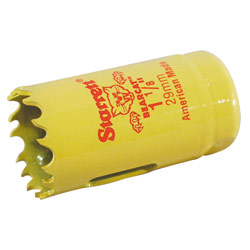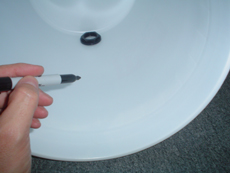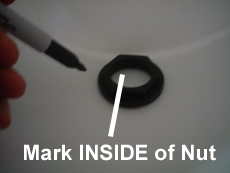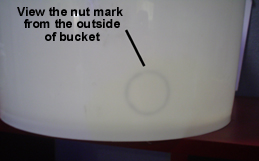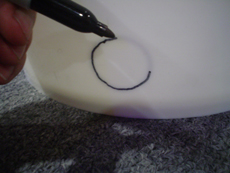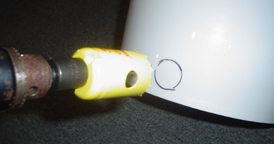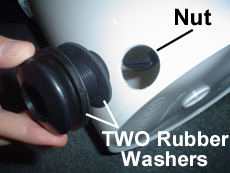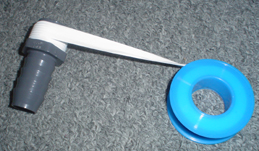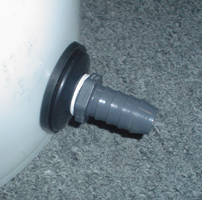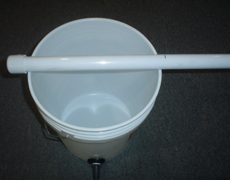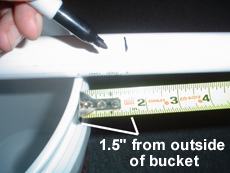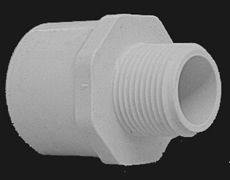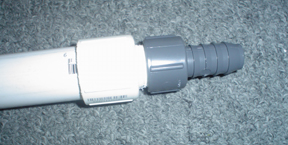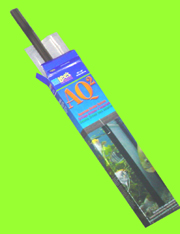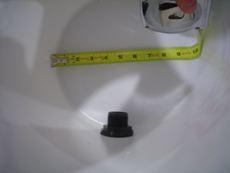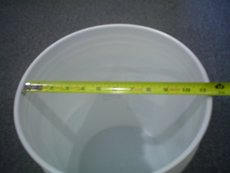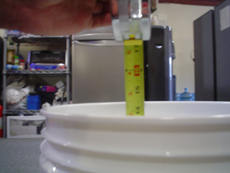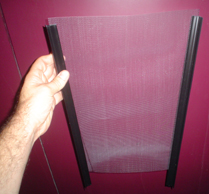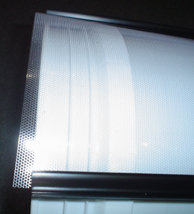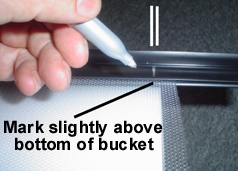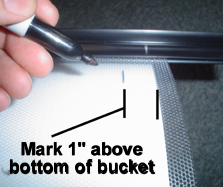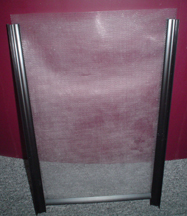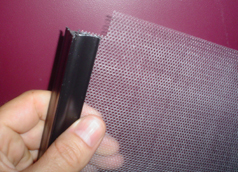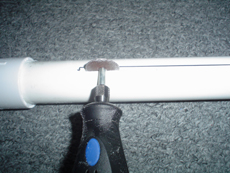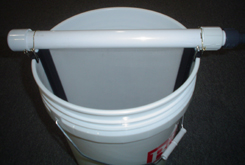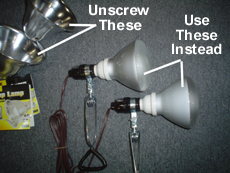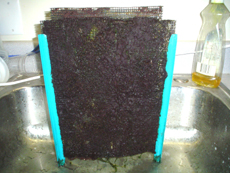santamonica
Member
Mega-Powerful Nitrate and Phosphate Remover Replaces Skimmer, Refugium, and Everything Else
Part 1 of 8
If anybody has not yet hooked up their refugium or skimmer, or was just looking get rid of these things, then you might want to try one of these mega-powerful filters that I built. You build it with stuff laying around, and it can take as little as a few minutes, or up to a day. It will replace (or keep you from needing) a skimmer, refugium, phosphate removers, nitrate removers, carbon, filtersocks, and possibly even waterchanges.
It's called a Turf Algae Filter, and it works in salt or freshwater. It's smaller than most pieces of reef equipment (yet it's more powerful), and it can be put into a bucket or your sump. It's most powerful feature is that it leaves food particles in the tank so the corals can feed, yet it removes nitrates and phosphates, most of the time down to zero. This is the OPPOSITE of what a skimmer does; a skimmer removes food particles (so corals starve) and then leaves the nitrate and phosphate in the water so you have to use other methods to get the nitrate and phosphate out. And how about all that gunk that your skimmer pulls out? Well, half of it is food that you just fed, and your corals wanted to eat it. What about the other half, the waste? Well, that's food too!
Here is my Turf Algae Filter in a 5-gallon bucket; it's the only filter I have of any kind on my 100 gallon reef:
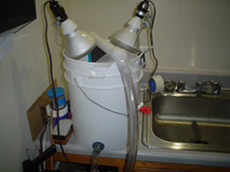
Here is the filter in operation with the lights on:
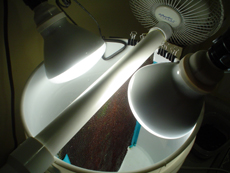
Here is my tank:
And here are the only things you need to build it:
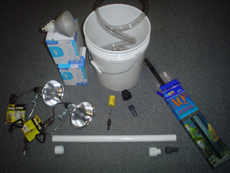
My nitrate and phosphate are zero, and the only thing in my sump is: Water. I removed the skimmer, carbon, phosban, polyfilter(s), and filtersock; I don't use ozone, vodka, zeo or anything else. I'm feeding massive amounts too; enough that if I had my previous filtering setup, I'd have to clean the glass twice a day, and everything in the tank would be covered in green or brown algae. Amazing.
The process of using turf algae to filter aquariums has been around for decades, but the contraptions were huge and expensive, and for some reason nobody thought to make a simple one in a bucket or sump. So here is one you can make in a few minutes, or a day, depending on which one you choose. It's simple enough (and basically free) that you should try one on your system even if you have no intention of eliminating your skimmer/refugium, etc.
The principal is very simple: You have a screen; light is aimed at the screen, and tank water is streamed over the screen. What happens is that a type of algae called "turf" starts growing on the screen (it feels very similar to artificial turf on football fields), and this turf eats ALMOST ALL the nitrate and phosphate in the water flowing over it. However, the turf does NOT eat the food/pods/plankton in the water, so this food will stay in the water for the corals to eat. This is the OPPOSITE of a skimmer, which takes out the food/pods/plankton (so corals starve), but leaves in the nitrate and phosphate that you have to then get out using other means. What about fish waste that skimmers normally pull out? Well that's food too, for somebody. Only after waste decomposes completely into nitrate and phosphate is it no longer "food", and at that point the turf algae zaps it! After all, what do you think the green algae on your rocks and glass are eating? Food? No. Nitrate and phosphate!
Part 1 of 8
If anybody has not yet hooked up their refugium or skimmer, or was just looking get rid of these things, then you might want to try one of these mega-powerful filters that I built. You build it with stuff laying around, and it can take as little as a few minutes, or up to a day. It will replace (or keep you from needing) a skimmer, refugium, phosphate removers, nitrate removers, carbon, filtersocks, and possibly even waterchanges.
It's called a Turf Algae Filter, and it works in salt or freshwater. It's smaller than most pieces of reef equipment (yet it's more powerful), and it can be put into a bucket or your sump. It's most powerful feature is that it leaves food particles in the tank so the corals can feed, yet it removes nitrates and phosphates, most of the time down to zero. This is the OPPOSITE of what a skimmer does; a skimmer removes food particles (so corals starve) and then leaves the nitrate and phosphate in the water so you have to use other methods to get the nitrate and phosphate out. And how about all that gunk that your skimmer pulls out? Well, half of it is food that you just fed, and your corals wanted to eat it. What about the other half, the waste? Well, that's food too!
Here is my Turf Algae Filter in a 5-gallon bucket; it's the only filter I have of any kind on my 100 gallon reef:

Here is the filter in operation with the lights on:

Here is my tank:
And here are the only things you need to build it:

My nitrate and phosphate are zero, and the only thing in my sump is: Water. I removed the skimmer, carbon, phosban, polyfilter(s), and filtersock; I don't use ozone, vodka, zeo or anything else. I'm feeding massive amounts too; enough that if I had my previous filtering setup, I'd have to clean the glass twice a day, and everything in the tank would be covered in green or brown algae. Amazing.
The process of using turf algae to filter aquariums has been around for decades, but the contraptions were huge and expensive, and for some reason nobody thought to make a simple one in a bucket or sump. So here is one you can make in a few minutes, or a day, depending on which one you choose. It's simple enough (and basically free) that you should try one on your system even if you have no intention of eliminating your skimmer/refugium, etc.
The principal is very simple: You have a screen; light is aimed at the screen, and tank water is streamed over the screen. What happens is that a type of algae called "turf" starts growing on the screen (it feels very similar to artificial turf on football fields), and this turf eats ALMOST ALL the nitrate and phosphate in the water flowing over it. However, the turf does NOT eat the food/pods/plankton in the water, so this food will stay in the water for the corals to eat. This is the OPPOSITE of a skimmer, which takes out the food/pods/plankton (so corals starve), but leaves in the nitrate and phosphate that you have to then get out using other means. What about fish waste that skimmers normally pull out? Well that's food too, for somebody. Only after waste decomposes completely into nitrate and phosphate is it no longer "food", and at that point the turf algae zaps it! After all, what do you think the green algae on your rocks and glass are eating? Food? No. Nitrate and phosphate!


